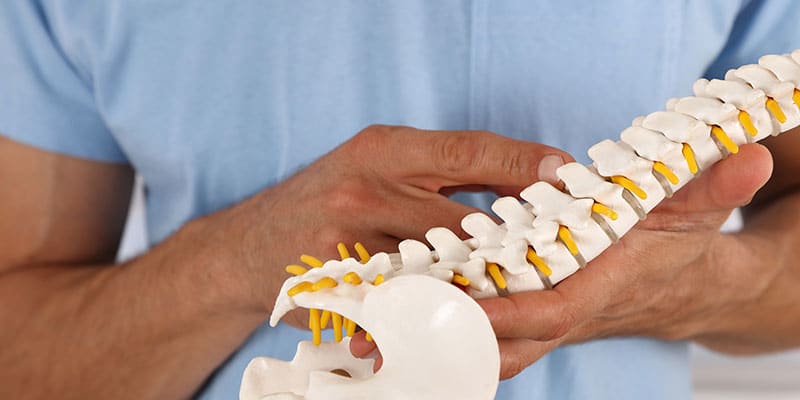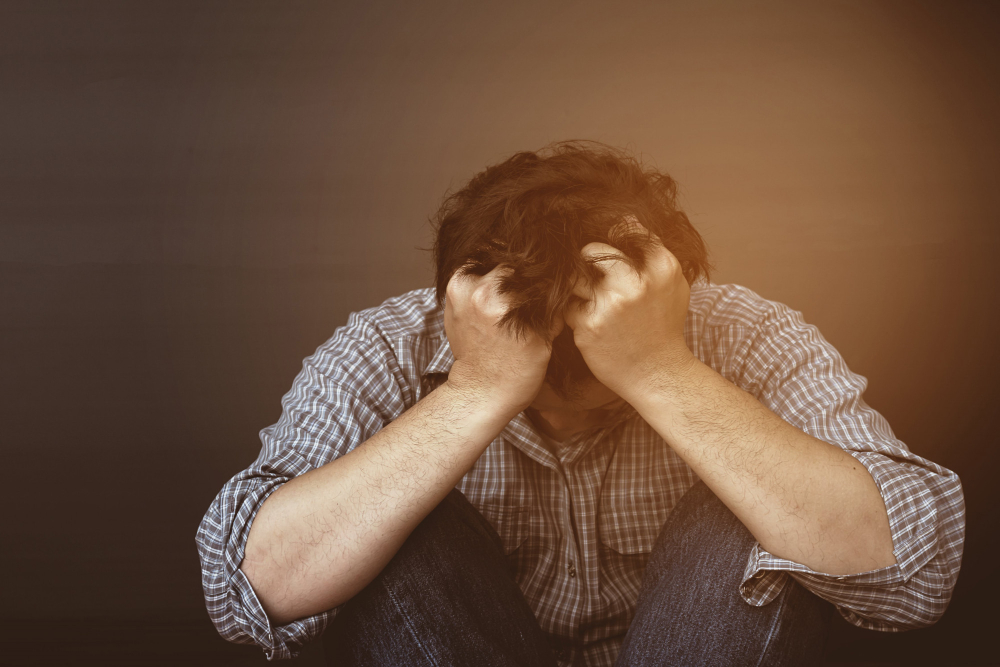
Life With Spinal Cord Injuries
As we write this blog, someone falls down and injures their back or has a vehicular accident somewhere. Falls and accidents are common but an overlooked reason for the injury, especially to the spine.
According to the World Health Organization (WHO),around 2,50,000 to 5,00,000 people suffer spinal cord injuries every year. Spinal Cord Injury is a term that concerns the injuries to the spinal cord due to trauma (accidental falls and vehicular crashes) or degenerative diseases like cancer. According to WHO, about 90% of SCIs are due to traumatic reasons.
The spinal cord is a delicate wand-like bundle of nerves securely encased within the backbone. It acts like a "highway" through which all messages from the brain travel to the other parts of the body and vice versa. Like every other major organ in the body, the spinal cord plays an indispensable role in helping you function normally. As with all organs, one traumatic blow to the spinal cord is enough to cause permanent damage and debilitating effects.
A damaged spinal cord can have a mild to severe impact, causing the body to lose its crucial functions. An SCI can affect the following:
- Bladder and bowel function.
- Nerve-brain coordination.
- Metabolism, heart rate, and breathing.
- Bodily sensations, reflexes and muscle movement.
Types of Spinal Cord Injuries
Generally, any injury to the spinal cord falls under any one of the two categories:
1.Complete injury
A complete injury is a severe injury to the spine resulting in:
- Loss of body functions due to complete paralysis.
- Quadriplegia or paralysis of hands and legs.
- Paraplegia or paralysis of the lower limbs.
2. Incomplete injury
An incomplete injury does not cause total harm to the body. The body-brain connection still remains intact in some parts of the body. Therefore some function remains on one or both sides.
The type of SCI largely depends on the location of the injury on the spine, namely:
- Thoracic spinal injury
- Sacral spine injury
- Cervical spine injury
- Lumbar spine injury
Since each part of the spine controls different body parts, it is most likely that the injured person will lose all feeling and control in the limbs below the injury location. As already mentioned, most people incur mild to severe SCIs, mostly due to accidents. The National Spinal Cord Injury Statistical Centre (NSCISC), located at the University of Birmingham, states that SCIs affect women more than men. The NSCISC also states the following five reasons as the top reasons for spinal cord injuries.
Let's check them out in detail.
5 Most Common Reasons for Spinal Cord Injuries
1. Falls
A small trip of the leg or a little tumble can sometimes result in a grievous injury to the spine. Even slipping and falling can result in spinal injuries. Falls are common, but the likeliness of falling increases with age. The Centers for Disease Control and Prevention (CDC) says that at least 3 million people are treated in hospital emergency rooms every year for fall-related injuries.
Falling from a height such as ladders, step-stools, and stairs can injure the spine. The lower back absorbs most of the impact, thereby resulting in a spinal cord injury. The injury can be severe depending on the impact of the fall and if you already have a preexisting back condition.
People are most likely to fall due to:
- Loose doormats and rugs.
- Unstable ladders and stools.
- Weak knees, hips, and leg muscles.
- Vision problems due to diabetes, stroke, and heart diseases.
2. Vehicular Accidents
Spinal cord injuries that result from vehicular accidents are most severe and life-altering. The sudden impact and unexpected pressure of vehicular accidents can be so debilitating that it can sometimes bend or twist the spine and damage the nerves, muscles and joints.
Any such trauma to the thoracic, lumbar, or cervical region of the spine can result in paralysis from the neck or waist downwards. Doctors and rehabilitation centre experts who treat SCIs say car accidents are the biggest reason for SCIs. Other reasons include accidents involving:
- Bikes and bicycles
- Heavy work-related vehicles like cranes and forklifts
- SUVs, all-terrain vehicles, and snowmobiles
3. Alcohol-related Accidents
Are you aware that nearly a quarter of all SCIs occur when people are drunk? The most painful aspect of alcohol-related SCIs is that they are inherently preventable, making the injury, pain, and trauma even more horrific. Why do people have alcohol-related accidents? Excessive alcohol impairs cognitive thinking, reasoning ability, body balance and coordination. Such a deadly combination is more than enough to cause serious spine-related injuries.
The risk of injury is also greater when the person consumes more alcohol leading to uncontrolled, risky behaviour during or after the occasion. Moreover, alcohol use is correlated with cervical injuries, since the cervical cord can easily be damaged during trauma.
4. Violent Incidents
Violent altercations are another major cause of SCIs. Experts say that gunshots are the most common reasons leading to partial or complete spine severing. The SCI may sometimes occur when the bullet ricochets off another body part such as the rib cage and damages the spine.
Other violent acts with knives, hammers, or other blunt objects, etc., can also have a debilitating impact on the spine. Whatever the object, any deeply penetrating wound can severely damage the spine and its surrounding nerves and tissues.
5. Sports & Recreational Activities
Spinal injuries in sportspersons have become a common occurrence. Most of these injuries happen when sportspersons exercise heavily at the gym or sustain hard falls while at the sport. Contact sports like football can also cause severe strain and inflammation to the spinal muscles. Activities like diving can lead to more severe injuries, thanks to the height and force of the impact.
Unfortunately, highly impactful sport-related incidents can sometimes directly injure the spine, leading to complete or partial paralysis.
Sports-related spinal injuries can occur due to:
- Accidents while playing high activity sports like surfing, horse riding, gymnastics, diving, wrestling, boxing, skiing, football, etc.
- Unintentional movements while exercising.
- Excessive weight-lifting.
- Head-on collision with another player.
- Poor form and technique while exercising or playing the sport.
How will you identify an SCI? Are all back pains a symptom of spinal injuries? No. There are specific tell-tale signs of SCIs. Read on to know what they are.
Diagnosis & Symptoms of Spinal Cord Injuries
Spinal cord injury symptoms are identifiable by the location and type of injury to the spine. After a fall or accident, a person may have a spinal injury if they show any of the following symptoms:
- Difficulty in walking or breathing
- Loss of bladder and bowel control
- Inability to move the upper and lower limbs
- Numbness or tingling in the extremities
- Loss of consciousness
- Mild or severe headache
- Pain, pressure, numbness or stiffness in the head or neck
- Unnatural positioning of the head
When a person falls or has an accident, the first thing to do is to call for first aid and take them to a hospital. Doctors will first check if the spinal cord has sustained any damage after assessing the symptoms. If the spinal cord is damaged, they will ensure that the injury is not affecting the person's breathing or heart rate.
Doctors will then assess the following functions:
- Ability to feel and touch.
- Movement of the limbs, fingers, and toes.
- Movement of the head and neck.
- Motor and sensory functions.
Doctors will also recommend a slew of tests to ascertain the SCI. Some tests that help diagnose an SCI are:
- CT scan- to see the broken bone, blood vessel damage and blood clots.
- MRI scan- to assess the spinal cord tissues.
- Evoked Potential Testing- to test the brain's response to nerve signals.
- X-rays- to locate fractures and bone dislocations.
How to Prevent Spinal Cord Injuries
Most spinal cord injuries are preventable. All you need is to be a little more careful and implement some risk-reducing measures like:
- Avoiding the use of rickety old ladders and stools.
- Wearing your seatbelt or helmet while using your vehicles.
- Avoiding driving under the influence of alcohol.
- Wearing protective sports gear.
- Checking the water depth before diving.
- Using handrails to climb stairs.
- Avoiding slippery, wet floors.
- Using non-slip mats on bath floors and tubs.
- Using step-stools with grab bars.
There is Always Hope with Hamsa
Spinal cord injuries should never be underestimated. Any SCI can be difficult to deal with, and the repercussions can be life-altering. However, immediate treatment and rehabilitation can put one's life back on track even after sustaining an SCI.
At Hamsa Spine and Brain Rehab, Chennai, we offer unparalleled support with our team of expert doctors and therapists. Rebuild your hope and life with Hamsa! Call us today for more details regarding rehabilitation for SCIs.












